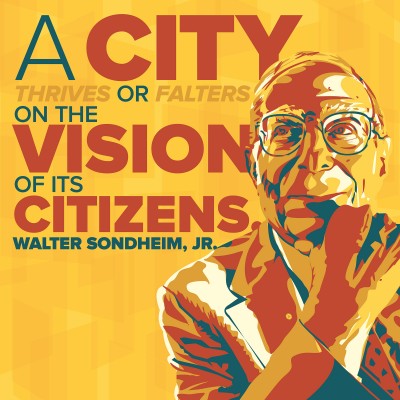Ten in the Twentieth: Baltimore Jews and Social Justice 1950s
Article by Dr. Deborah R. Weiner. Originally published in Generations 2009-2010: 50th Anniversary Double Issue: The Search for Social Justice.
The Baltimore Jewish community has produced many leaders who have worked to make the world a better place. The range of issues they have addressed is impressive: from women’s suffrage to civil rights, labor relations to helping the elderly, refugee resettlement to eliminating poverty, and much more.
This chronology traces the careers of ten Baltimoreans who stood up for social change, with each person’s entry revolving around a turning point—one for each decade of the twentieth century. This is by no means a “Ten Best” list. The people included here are remarkable for what they accomplished, but others, equally remarkable, could have been chosen as well. These profiles should be seen as representative of a larger group of Baltimore Jews who have made major contributions to their communities and to the broader society in myriad ways.
The 1950s:Walter Sondheim Jr.
Click here to start from the beginning.
1954: In its Brown vs. Board of Education decision, the Supreme Court famously urges the desegregation of the nation’s schools “with all deliberate speed.” The Baltimore City school board, under the leadership of its president, Walter Sondheim Jr. (1908-2007), is one of the few in the nation to take this directive seriously. With Sondheim’s quiet urging and careful guidance, the board votes unanimously to desegregate, and the school district prepares to open an integrated system by the fall, becoming “the first school district south of the Mason-Dixon line to move on the court order,” according to the Baltimore Sun.
School desegregation was just one example of Sondheim’s leadership, as the Sun noted in front page coverage of his death in 2007 at age 98: “When Baltimore mayors, Maryland governors and other civic leaders needed sage advice, inevitably they sought it from a man widely admired for integrity and uncommon warmth and graciousness.” Sondheim played a major role in the development of Charles Center in the 1960s and the Inner Harbor in the seventies and eighties. He headed the housing authority and chaired a governor’s panel on school performance. Involved in civic life well into his nineties, his death seemed like the end of an era.

